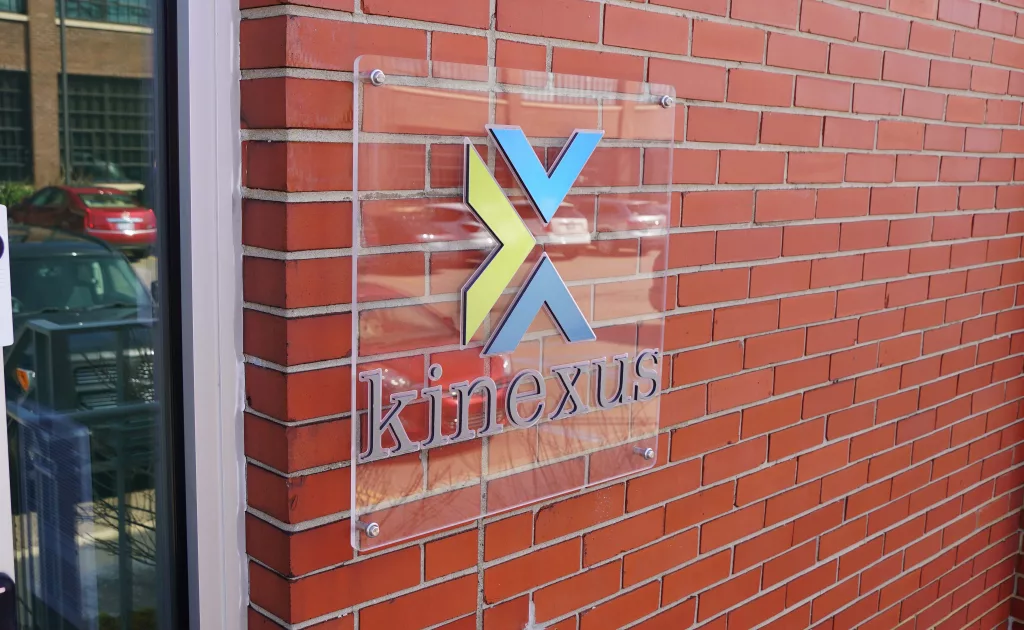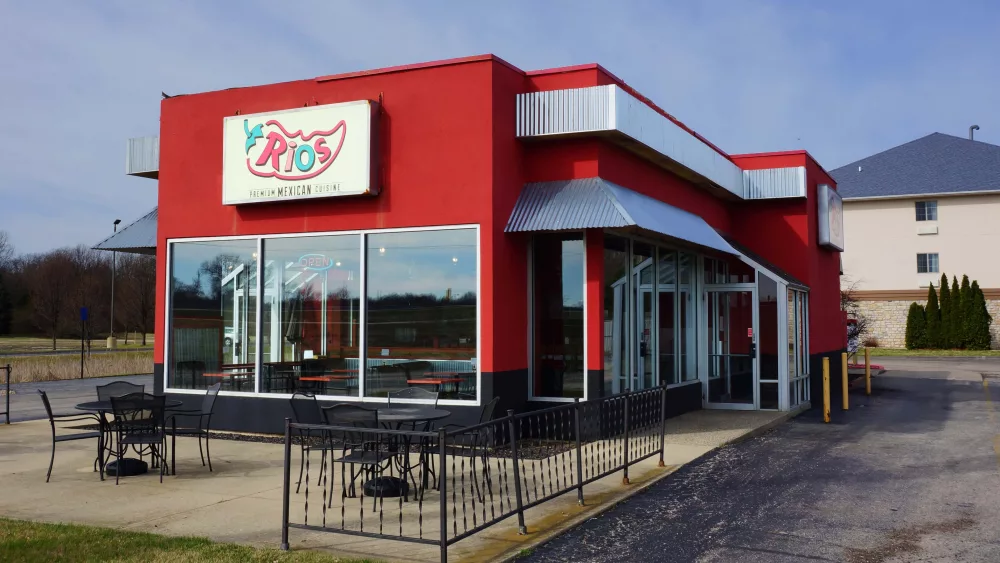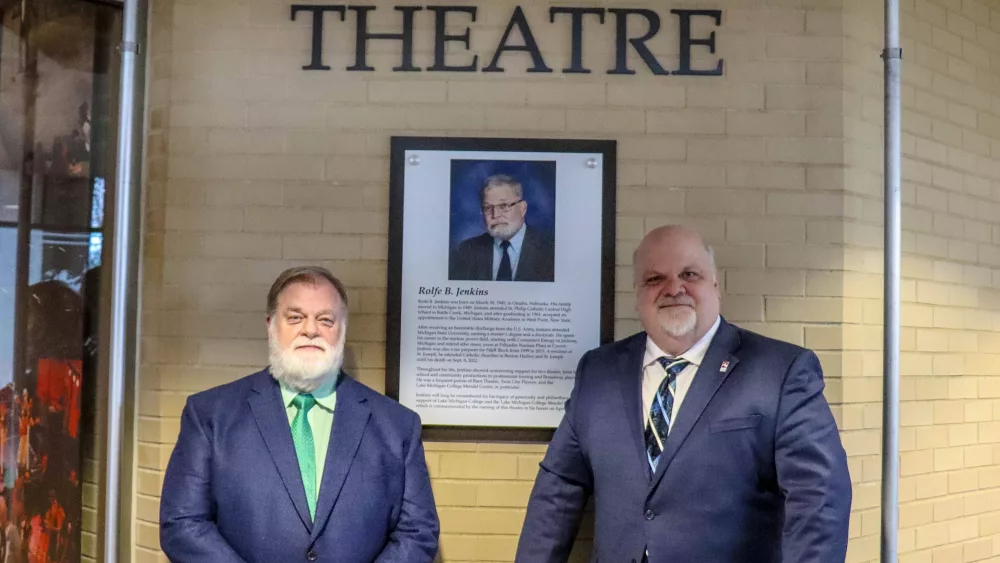The team at Kinexus Group, calling the pandemic “a once in a generation or once in a multi-generation event,” admits that they are deeply concerned about several sectors of the business economy in Michigan’s Great Southwest. Ironically, the team that routinely bills themselves as the ones “who work with local businesses to find out what keeps them up at night,” may well be facing some sleepless nights themselves.
Executives Todd Gustafson, Al Pscholka and Jake Gustafson (no relation to Todd) conducted a quarterly media roundtable today and took a deep dive into the numbers surrounding the COVID pandemic and its impact on various sectors of the local economy.
Jake Gustafson, Chief Operating Officer at Kinexus, says, “We use sector breakdowns to drive a lot of our operational decision making, and to try and understand our environment. What we’ve seen is that the numbers are pretty dramatic for how badly this has affected certain industry sectors as opposed to others. By far the hardest hit, has been where you’d expect it, which has been leisure, hospitality, and tourism. In our region, employment in that sector is down more than 40-percent year to date (-44%), which is unfortunately, the part of our labor force that is most often on the early or entry-level wage scale, so you’re talking about people that are paid less to begin with, and the least likely to be able to absorb economic disruption. It’s the field that has been most adversely affected.”
Gustafson frankly admits, “We’re really concerned about the leisure and hospitality shortfalls because that’s the most vulnerable population of workers, and comprise the vast majority of small businesses that are in trouble. If we had to ‘red circle’ one sector for us to pay special attention to it is leisure and hospitality.” He adds, “Not to sound too alarmist, we’ve had some positive effects over the last few months as we’ve come out of the lockdowns, but unfortunately this is an area that has high seasonability. We probably have two more months of prime economic season until we move into what’s a traditionally slow season, and so the goal is to try to get businesses in the best shape possible before the winter slowdown. Otherwise there’s a second pruning or a second withering of companies that could occur this winter.”
The Kinexus team worries about that sector, calling it, “The most immediate need right now, because it involves the folks at entry level or lower income wage brackets, but there are still folks hurting across the spectrum, and there will be a lot of folks that find this will change their economic reality.”
He goes on to say, “We’re very worried because it’s not just the normal businesses, or the one’s that you’d expect that have high viability and low survival rates like restaurants or those with a high degree of turnover, this is really across the board, most of the small businesses that we’re seeing here are facing significant threats to their viability going forward. That’s why things like the payroll protection program and other help from the MEDC have been so critical. They hit the folks that needed the lifeline the most. Cornerstone Alliance, Market Van Buren, and others have helped out tremendously. Small businesses are the ones that are really staring at some pretty grave consequences.”
Kinexus tracks tons of data to help the business community weather stormy times. Looking at a lot of the employment data, Jake says, “If you take a look at the labor force and the labor market especially in Berrien, Cass and Van Buren Counties, the roller coaster ride continues. We seem to be on the upward trend. The unemployment rates, while still historically — remarkably — high, in the 12 to 13-percent range, they are still in some cases up to 10 points better than they were at the height of the pandemic. If you look at the particularly hard-hit areas like Berrien County, which is currently at 13.7-percent unemployment, we were over 22-percent in June of this year. Those are remarkably poor numbers with literally one fifth of the workforce unemployed at that time.”
Gustafson says, “One of the cautionary trends that we talk about here at Kinexus Group, is we’ve seen records on both sides. Both record falls and record gains. If you fall into a 10-foot pit, you should be happy about a 6-foot ladder, but you’re not out of the hole yet. We’ve clawed back to 13-percent, but all indications are that this next jump to take us back to the pre-Covid levels of employment is gonna be a tough haul, it’s gonna be a tough slog. Nationwide, if you take a look at the predictions many economists are making, we’re talking about at least the second quarter of 2021 for recovery, and so far all indications are that our area will be in the same boat. We expect to be in double digit unemployment rates until at least the end of 2020, and probably moving into the second quarter of 2021. We think we’ve turned at least a small corner at least for a short term trend, and we believe that the August report will bring our region and Michigan more in line with the national trend.”
The Tri-County region of Berrien, Cass and Van Buren has a labor force of just over 140,000 people, and the team at Kinexus says, “shockingly the labor force has actually grown in the pandemic. We did not even begin to expect that to occur, in fact if you had talked with any of us at Kinexus six months ago we would have told you one of the key challenges facing our area was a shrinking labor force.” Statistically, the labor force has grown by 3-percent in less than half a year, which is a “blistering pace in a statistical sense.” A lot of structural underlying issues there appear to be driving that. Jake says, “What we believe is occurring is likely several factors. Some folks are returning to the area, as part of the ‘boomerang phenomenon,’ from people who leave the area but come back, and in times of uncertainty, people are more likely to return to their home area, where the family and support networks are. Perhaps more likely, the CARES Act package of federal relief that came out in April and May drove a lot of people that we ordinarily wouldn’t have counted as part of the labor force came into it in order to become eligible for some of the benefits. Folks like independent contractors, people who participate in the gig economy, and others that would be considered in the gray margin of normal members of the labor force. Regardless, it has grown our labor force, and it will be interesting to see if we can keep it going forward.”
Inasmuch as we’re still clearly not out of the woods with regard to the pandemic, the team cautions that if Michigan had to return to April and May levels of quarantine and lockdowns, we’d see things backslide considerably.
The impact on small business has been almost unprecedented. Jake says,”To be honest, there are a few numbers that have really made us stop and open our eyes and bring great concern. They are the firms that have had the hardest impact, or the impact has been the most severe, and the effects of the pandemic lockdown are going to have the highest degree of consequence for them.
One of the largest phenomenons the region is encountering as a result of the coronavirus is the drop in consumer spending. Gustafson says, “In times of uncertainty, folks are doing exactly what you’d expect them to do, managing household budgets, being smart and judicious on how they’re spending their money, curtailing luxury or extraneous expenses, and people who ordinarily would come here and spend money in the tourism markets are making the same decisions. In Berrien County that has manifested itself as a drop in consumer spending by almost a third since March 1st of this year.”
That means that for every three dollars that were spent in Berrien County last year, one of them is gone now, and it will take time to build it back up, because only two of those dollars are being spent this year. Kinexus recognizes that too often you don’t know a small business is in trouble until its already gone on too long and it’s too late to be able to help them.
Looking across the board at a lot of the data, activity is consistently 25 to 33-percent lower for small businesses across the region. Gustafson says, “When expenses stay the same but revenue drops, the effect on your balance sheet is often unsustainable, and we’re seeing that a lot throughout our region. Just over 28-percent in small business revenue fall off, and there aren’t too many businesses that can operate with that type of margin for more than a few months.”
Todd Gustafson points out that with different states employing different methods to keep people safe, “The geographic location that we are in reflects some of the uneven measures that have been taken between Michigan and Indiana, which has resulted in retail leakage as people searching for the opportunity to get out were forced to go across the state line, and that impacts our businesses.
Al Pscholka notes that it goes beyond cross border issues, with the lockdowns dramatically advancing online shopping. He suggests, “This has probably moved online shopping up by about five years. We’ve seen the trend of people buying things online and not from their local retail store or market, and with everybody sitting at home buying on line, it has advanced at least five years ahead of when it might otherwise have moved up.”
Todd notes there is a silver lining of sorts for those on the local scene who stepped up their game, saying, “The good news is that those who have embraced online opportunities at the local level have been performing better than those local merchants who have not.” To further back up the online argument, Jake notes, “We’ve never stopped recruiting for delivery drivers. It has been a constant need all across the region.”
Todd also notes a silver lining for those savvy employers who are always looking forward, noting, “There are over 290 job openings in our region right now, and in conversations with many business owners, the ones that are sustainable and look to grow in the future are viewing this as an opportunity to find talent, because they know there’s a lot of good talent out there.”
While leisure, hospitality and tourism were the hardest hit, there were other sectors who were pretty adversely affected.
Manufacturing, one of truly key sectors in the region, especially advanced manufacturing which drives our economy, lost 11-percent of its employment base over the year. Jake says, “In any other year that would have been catastrophic, but this year it looks like a bump in the road compared to some of the other factors. These are the folks we’ve seen pop back up on the radar as soon as possible, especially those who are doing most of the hiring or looking for talent right now.”
Manufacturing has also been a bright spot for some of the good stories coming out of our region during the pandemic, because “a lot of really good manufacturers pivoted or changed their model, or even changed their product line.” A great example is Barber Packaging in Van Buren County where they changed from light industrial packaging to making visors for health care workers and medical professionals, and did it rapidly while keeping their workforce going. And then there are folks like Lyons Industries in Dowagiac who benefited from the stay at home renovators who undertook home improvement projects. They’ve been advertising for talent all the way through the pandemic as they go full bore.
All indications are that agriculture will suffer a little bit as we come out of the summer season and into the fall, so probably losses in the 10 to 15-percent range for that sector.
Jake says, “Health care surprised us a little bit. For six weeks there were no elective procedures performed, and that reverberates well beyond the medical professionals to the ranks of the support staffs, schedulers and the like. The pandemic had a pretty significant hit on the health care sector in the range of around 10-percent loss of employment.”
If things continue to linger, the Kinexus Group team is worried about the impact. Todd says, “The longer that discretionary spending suffers, and/or declines, the harder the hit will be and the slower the rebounds. Hopefully that will rectify itself sooner rather than later, and I know there are a lot of discussions at particularly the national level of how to continue that, so we look forward to see what those solutions are because we know that it has an out-sized impact on our region.” He also suggests, “It will take a collaborative effort to move forward and we’re working with Cornerstone Alliance and Market Van Buren and the Southwest Michigan Regional Chamber of Commerce, and the United Ways of the world and it will be very important.” He adds, “We’re already talking about creative ways to help with things like job fairs and other best practices to help people connect with opportunities and for employers to connect with talent. In fact there’s a virtual hiring event coming up on August 11th. More on that coming.”
The reputation of Kinexus continues to grow as they help people of all types work through issues. On a sidebar in recent weeks, Jake says, “We’re not the unemployment office, but we did step in to help the state of Michigan with a lot of folks who found themselves in pretty dire straits, and we re-purposed our staff to try to help folks access that system. We’re very proud of the work our team has done. Towards the end, our staff was doing such a good job of helping people maneuver through the issues that there was actually a Facebook post in Detroit telling people to call the Kinexus office in Benton Harbor to get help.”
Todd explains further, “It was a Facebook group with over 50,000 people who were all trying to figure out how to solve their unemployment challenges and issues, and when our number got shared online our weekly calls spiked from about 1,500 to 8,500 and those people were calling from all over the state of Michigan and we were trying to help them even though we’re not the unemployment office.” When you’re good, you’re good…and word gets around.
So, while the Kinexus crew continues to research what keeps business people up at night, they themselves will likely be getting considerably fewer than “40 winks” at night in search of viable solutions to help everyone get back on track.






